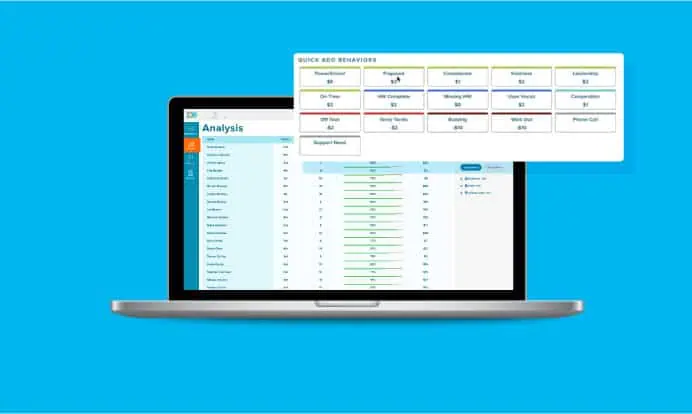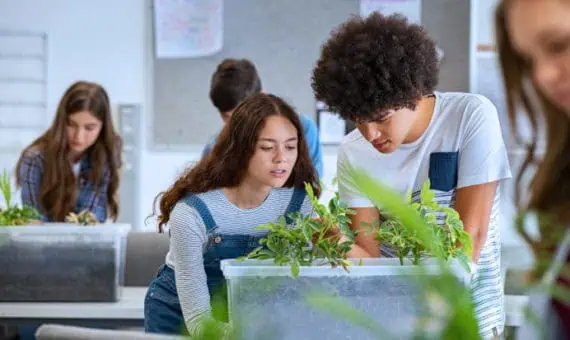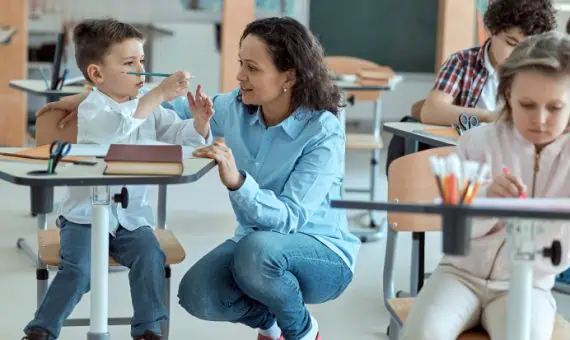Students don’t always behave the way we’d like them to. Sometimes, however, they’re not intentionally misbehaving. They just don’t know what to do. Classroom confusion and inconsistency can trigger anxiety and cause students to misbehave. Having a consistent PBIS program that kids understand helps to build clarity and reduce misbehavior that stems from confusion.
Consistent routines support positive behavior and maximize class time, but it takes commitment to keep them in place. It requires teachers to think strategically about what must be accomplished in every class, develop systems, teach procedures, and practice routines to enforce expectations. This can be challenging because it requires attention to lots of details. But, when students know what to expect—and what is expected of them–during each section of class, they are less likely to get frustrated, distracted, and misbehave.
Here are nine systems teachers can implement to ensure that class functions smoothly, with minimal interruptions and maximum student engagement.
9 PBIS Systems to Use in Your Classroom
1. Entering the classroom
Think about what students need to do when they first get to your class. Having a vision for what being “ready to work” looks like will help you lead students to success. Clarify your PBIS entrance system by:
- Making a seating chart. Assigned seats help students know what to expect and can be changed as often as you’d like. If you do change them, make sure students know where to get the information to know where to sit.
- Deciding how students will receive classroom materials. You can put the materials on their desks if you have time between classes. Use classroom mailboxes if you have enough for each student, or have students grab materials from a bin near the door on their way in.
- Clarifying if you will collect homework or if students leave it in a bin.
- Identifying what items students need on their desks to begin working. Post this on the board or project it.
2. Exiting the classroom
Be just as clear with students about what they need to do to leave the classroom. This will save you time and keep kids focused. Clarify your PBIS exit system by:
- Building a system for turning in work. If you’re collecting hard copies, either collect it or have students put work in a bin near the door on their way out.
- Passing out homework or having a spot where students can grab it before they go. You can also add it to the materials packet they grabbed when they arrived.
- Knowing where students are going next so you can give them enough time and adequate directions. (Keep a schedule posted near where you frequently stand to support you with this.)
3. Signaling for questions
Students have needs and teachers have limited time and capacity when leading direct instruction. Having hand signals that clarify what a student needs can allow the teacher to give permission without having to talk with the student. Develop and teach signals for when a student would like to:
- Use the bathroom
- Borrow a pencil
- Sharpen a pencil
- Get a tissue
4. Signaling for bathroom breaks
Students will have to go to the restroom. Even if you have a strategic schoolwide plan for bathroom breaks, there will still be emergencies. Develop a bathroom pass system that students can use when they leave to go to the restroom. If all students go to the restroom in a specific class, develop a routine that clarifies who goes when. For example, use an item that students pass to each other and leave on their desks to signify who is out for a bathroom break.
Pay attention to students who need to use the restroom more often. This may be a signal that the student needs their own bathroom plan. It is essential that bathroom needs are considered because students may struggle to focus when they are uncomfortable. Consult with the school nurse and parents if this is the case.
5. Passing papers
Distributing or collecting papers can be done quickly by doing it the same way each time. For example, if students are in rows, pass out the stack of papers to the front person in every row, and collect papers the same way. You could even have students in the front row pass the papers over to the last front person. Developing consistent behavior procedures for how students receive materials and turn in work will prevent unnecessary movement in the classroom.
6. Managing volume expectations
Classrooms don’t have to be silent to be productive. Students may need to talk with their partners to complete group work. Additionally, giving students opportunities to engage in dialogue shows that teachers trust them and believe they are mature enough to work and have positive, productive interactions with their peers. The key to having any level of conversation in class is clarifying volume expectations.
Explain to students (and practice) how loud their voices should be for every type of classroom talk that may occur. Make sure to clarify when each type of talking is appropriate. Sometimes, it will be mandatory for students to be silent. Helping students understand why agreeing on volume levels is necessary will increase their investment in following your PBIS-driven procedures.
7. Managing “attention getters”
Find ways to ensure students know that you need their attention. Attention getters are designated students who are responsible for helping the teacher transition the class from one activity to the next. For example, attention getters can be used to move students from group work to independent work or to get students ready to pack up before leaving class.
When leading attention getters, make it fun. Say one statement and expect that students respond with a statement before silently directing their attention to you for further directions. These could be song lyrics or a phrase that affirms students in the classroom. Additionally, teachers can get students’ attention by developing a special clap. Change who gets to be an “attention getter” on a regular basis so it becomes a privilege students look forward to.
8. Facilitating group and partner work
When students work together, they should understand what partnership needs to look like. Students should know who they are working with and what their responsibilities are. Additionally, think through how students can move their desks or rearrange their bodies to make group work as seamless as possible. Without clarity, students may engage in unproductive classroom behavior.
9. Establishing a daily routine
Class should be predictable. Even if you do different types of lessons, students should have a clear understanding of what behavior is consistently expected. Ensure that the routine is posted and clarify what each part of the lesson looks like. Ideally, students should be able to run the classroom if you are absent. This means they can explain how independent reading works, where they get materials before they complete a science lab, how they log into technology, etc.
Teachers have so many things to think about daily. From planning lessons to grading to communicating with parents, they have a lot to do! Building consistent daily procedures that live in the classroom saves teachers time and energy. Most of all, these systems can promote positive behavior and ensure students know what is expected of them throughout the entire class. Make class calm and productive by using systems that promote positive behavior.
Support the Whole Child
PowerSchool Behavior Support helps educators manage social and emotional learning (SEL) and multi-tiered systems of support (MTSS), like PBIS, to help improve student well-being and school culture and achieve more equitable outcomes.
Watch the Demo


